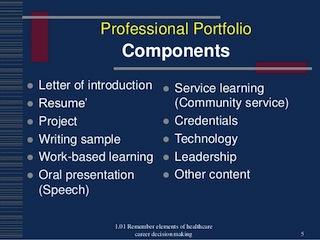 WordPress meets Markethive
WordPress meets Markethive

At one point the decision or revelation became the foundation of the Markethive blogging system. Markethive would make WordPress better.
Let me explain. At one time we considered creating a blog software solution, (Blog Press) with templates that would compete with WordPress. I know, stupid. But at the time, there were many who thought it was a good idea.
The argument went like this, “Joomla, Drupal, Blogger, Typepad, etc.” offer others options so we should too. OK, I said, but then the list of competitors grew from WordPress to a much larger list, and not only did it make us another “ME TOO” company instead of an innovative cutting edge customer centric juggernaut.
I made the decision to “not” jump in as yet another standalone (CMS) blog platform like Word Press, but rather to create a powerful system to make Word Press and other CMS far more manageable, with the goal to make them better. Particularly functioning on making the world heavy weight Word Press even better by enhancing the WP platform with a supporting blog platform so multiple content could be constructed with partner contributors, so we could build a Broadcasting system utilizing literaly millions of members social networks, so we could build massive WordPress sites by many members in collaboration producing powerful SEO campaigns.
The whole idea has manifested as one of the most powerful blog collaboration Inbound Marketing systems ever devised, and that is Markethive.
Our roll being to fuse a powerful vertical targeted social network of Entrepreneurs, thereby making the Word Press and other CMS system powerful by the very spirit of the Rise of the Entrepreneur!
The following lists have become our goal to support the top contenders with plugins, widgets and collaborative power and function.
But the video tells it all.
Choosing blogging software can be a scary process, especially if you are new to blogging. There are many different types of engines and content management systems (CMS) that could be used. Picking the software that you’ll need is not an easy task, given the wide variety and types on the Web today.
There are many different aspects to consider when choosing which blogging software to pick. For instance:
Programming language.
Many blog platforms run on either PHP or Rails, but you can find just about any flavor of programming language you are looking for.
What features you’ll need.
The type of software you might choose is very dependent on the type of blog you are going to run. Some blog software is geared more towards new users, while others are more developer and designer-friendly. It’s a matter of finding software based on the features you need.
The size of the software’s community.
If the software community is larger for one blogging system and much smaller and less active than another, the more active community is usually a better choice for software. More active users within the development community means more improvements on the code base, in a faster time frame.
The age of the software.
The age of the software shows the maturity of the blogging platform. Young projects are more unstable, and are more likely to have bugs.
If you are planning on extending the blog.
If you are thinking about adding things like forums, a store, or some other feature to your blog, some blogging software will be more suited to fill that need than others.
The blog software that you choose can have a big impact on your blogging. It’s important to choose the right software in the very beginning, so you can avoid the hassle of migrating to different engine later on. Here are the pros and cons of the 10 most popular blogging systems.
Here is the list of the top 10 blogging CMS solutions:
1.Wordpress
Alexa Rank (276)-45

WordPress is the most famous and widely-used blogging platform. It features a very intuitive web-based installer so anyone from skill level novice to expert can quickly install the software without any hiccups.
The WordPress community is a major asset to the blogging software. It has one of the largest and most passionate communities of developers and users, so one could find just about any theme or plugin imaginable. The possibilities for extending the software are endless, and many web sites and services have used the WordPress code base to build entirely different applications. WordPress also features integration with Akismet, one of the most effective spam protection systems for blogging software.

WordPress makes it easy for new bloggers to not only install the software, but also to download and install automatic upgrades to plugins with only one click. The learning curve for WordPress is fairly minimal, and if a new user runs in to problems, they can always check the extensive documentation. WordPress is perfect for the new blogger who wants to get his feet wet installing their first blog software, or the advanced developer who’s looking to extend the stable code into something entirely different.
If you are wanting to start a multiple-blog site, you can also check out WordPress MU. WordPress MU is the same code base as the mature WordPress single blog code base, with some added functionality.
2. Drupal
Alexa Rank (2,497)-17

Drupal isn’t your typical blogging software. While it has an incredible community behind the code and many blogs use it for blogging software, it’s not just blogging software. Drupal is community software.
Drupal really shines as blog software for a blogging community. Performancing is a great example of using Drupal as a community of blogs. Whether you are wanting to power one blog to a 100, Drupal is an excellent choice.

Another strong point about Drupal is the versatility of the software. It comes packaged with a robust user system, but also a lot of community-friendly features like forums, books (for creating documents in a “book” structure) and a tracker which allows you to follow updates and content that other users have published recently.
Drupal also comes with a large community of developers and modules. With these modules, one could build any type of site or add nearly any sort of functionality to their Drupal installation. Many top-notch sites use Drupal to publish their multiple blogs and user communities. Performancing, Spread Firefox, The Onion, and Ubuntu and others.
Drupal is the perfect blogging software for anyone wanting to add a community to their blog with forums and extensions.
3. Joomla
Alexa Rank (2,689)-570

Joomla is a CMS that is similar to the community-friendly Drupal, and gaining traction every day. While Drupal is geared more towards developing community-flavored sites and blogs, Joomla seems to be geared more towards ecommerce (you can read more about the comparison between Joomla and Drupal here).

Regardless of their differences, Joomla is very much like Drupal in the fact that it’s easy to get anything from a simple site to a community blog in minutes. Joomla has a vibrant development community which has created many extensions.
Joomla is perfect for anyone wanting to build a blogging community site, or add ecommerce functionality to a blog.
4. ExpressionEngine
Alexa Rank (12,422)-2,466

ExpressionEngine is a very robust blogging platform, but isn’t free. The best feature about ExpressionEngine is the feature to publish multiple websites, either using different subdomains on a single domain, or across multiple domains.
You could use one code base to power multiple sites across multiple domains. The software features an extremely clean and simple backend that shouldn’t confuse the blogger. Designers and developers love ExpressionEngine for the fact that it’s quite easy to hand over a site and have the client update his own blog. It’s a solid all-in-one package.

ExpressionEngine is really geared for people who are trying to start a multi-blog site, but anyone can use the software quite easily thanks to its thoughtful and elegant design. A single license costs $99.95, but if you’re running a personal blog you can download the core version of EE.
5. Liferay
Alexa Rank (26,959)+3,284

Liferay Portal is a free and open source enterprise portal written in Java and distributed under the GNU Lesser General Public License. It allows users to set up features common to websites. It is fundamentally constructed of functional units called portlets. Liferay is sometimes described as a content management framework or a web application framework. It comes with certain portlets preinstalled. These comprise the core functionality of the portal system.

The reasons to use Liferay Portal for your website are simple: it provides a robust platform to serve your site to all clients, be they desktop, mobile, or anything in between; it provides all the standard applications you need to run on your site; and it provides an easy to use development framework for new applications or customization. In addition to this, Liferay Portal is developed using an open source methodology, by people from around the world. The code base is solid, and has been proved to be reliable and stable in mission critical deployments in diverse industries.
6. DotNetNuke
Alexa Rank (32,058)-238

DotNetNuke is an open source platform for building web sites based on Microsoft .NET technology. It is written in VB.NET and distributed under both a Community Edition BSD-style license and a commercial proprietary license. The Community Edition is a popular web content management (WCM) system and application development framework for ASP.NET, with over 6 million downloads and 600,000 production web sites as of October 2010. More than 8,000 DotNetNuke apps are available for purchase on Snowcovered.com. DotNetNuke.com has over 800,000 registered members as of October 2010.

Major Features:
Distinguishes between community (common features) and enterprise (full set of features) editions.
Various modules, and data providers.
Provides language packs for about 60 languages.
Customizable through skins and templates.
7. MODX
Alexa Rank (32,333)+1482

Modx is not just an open source CMS but also a web application framework. Raymond Irving and Ryan Thrash began the MODx CMS project in 2004 as a fork of Etomite. In 2008 MODx users created a new logo and branding for the project. Now MODx allows for full segregation of content (plain HTML), appearance and behavior (standards compliant CSS and JavaScript) and logic (PHP, snippets).

Major Features:
As with Joomla, modx officially supports only MySQL database.
Not just CMS but a PHP framework for Web.
Freedom to choose jQuery, Mootools, ExtJS, Prototype or any other JavaScript library.
Supports PHP 4.3.11 and above.
Complete control of all metadata and URL structure for SEO (Search Engine Optimization).
Unlimited hierarchical page depth.
Can create custom fields and widgets for templates.
Role-based permissions for the Manager.
Ability to customize the Manager on a per-deployment basis.
Ecommerce integration via Foxy Cart.
Extensions: 622, also known as add-ons.
8. concrete5
Alexa Rank (33,631)-292

Concrete5 is an open source CMS started in 2003 as a rapid-design approach to building the now-defunct LewisAndClark200.org, the official site for the Ad Council's National Council for the Lewis & Clark Bicentennial. Concrete5 is developed in PHP and is distributed under MIT software license.

Concrete5 features in-context editing (the ability to edit website content directly on the page, rather than in an administrative interface or using web editor software). Editable areas are defined in concrete5 templates which allow editors to insert 'blocks' of content. These can contain simple content (text and images) or have more complex functionality, for example image slideshows, comments systems, lists of files, maps etc. Further addons can be installed from the concrete5 Marketplace to extend the range of blocks available for insertion. Websites running concrete5 can be connected to the concrete5 website, allowing automatic upgrading of the core software and of any addons downloaded or purchased from the Marketplace.
9. Typo3
Alexa Rank (36,110)-8,334

TYPO3 is a free and open source CMS released under the GNU General Public License oriented to small to mid size enterprise-class users. TemplaVoila is an alternative template engine extension for TYPO3. A graphical mapping tool for creating templates is included, an alternative page module, the ability to create flexible content elements and an API for developers. New content element types can be created without programming. TemplaVoila facilitates more flexibility for maintaining web pages than TYPO3's standard templating, while making it possible to enforce a strict corporate design and allowing editors to work with content more intuitively.

Delivered with a base set of interfaces, functions and modules, TYPO3's functionality spectrum is implemented by extensions. More than 5000 extensions are currently available for TYPO3 for download under the GNU General Public License from a repository called the TYPO3 Extension Repository, or TER.
TYPO3 can run on most HTTP servers such as Apache or IIS on top of Linux, Microsoft Windows or Mac OS X. It uses PHP 5.3 or newer and any relational database supported by the TYPO3 DBAL including MySQL, Oracle, PostgreSQL, and others. Some 3rd-party extensions – not using the database API – support MySQL as the only database engine. The system can be run on any web server with a modern CPU and at least 256 MB RAM. The backend can be displayed in any modern browser with JavaScript. There is no browser restriction for displaying user-oriented content generated by TYPO3.
10. Alfresco
Alexa Rank (36,854)+2,483

Alfresco is an open source enterprise content management system for Microsoft Windows and Unix-like operating systems. Alfresco includes a content repository, an out-of-the-box web portal framework for managing and using standard portal content, a CIFS interface that provides file system compatibility on Microsoft Windows and Unix-like operating systems, a web content management system capable of virtualizing web apps and static sites via Apache Tomcat, Lucene indexing, and jBPM workflow. The Alfresco system is developed using Java technology. John Newton (co-founder of Documentum) and John Powell (a former COO of Business Objects) founded Alfresco Software, Inc. in 2005.

11. b2evolution
Alexa Rank (80,628)-14,427

b2evolution is another blogging platform that allows for a single installation of a blog, or a whole network of blogs, right out of the box. b2 probably has the weakest developer community behind it, with only a 200+ plugins (compared to Joomla’s 3,400+).

The software features a very easy-to-understand backend, ideal for beginners. b2 also has has a built in stats feature, which is something most blogging platforms don’t have out of the box. The software also features a post editor with a very minimal WYSIWYG editor, which is perfect for a beginning blogger.
While the b2 developer community may not be very large, it has a very promising code base and many people still use b2evolution to power their blogs and blogger communities.
The Irrelevant Others
Plone.org
Alexa Rank (102,395)+10,174

cmsmadesimple.org
Alexa Rank (104,671)-32,048

umbraco.com
Alexa Rank (116,439)-16,212

ez.no
Alexa Rank (154,173)-43,687

movabletype.org
Alexa Rank (174,802)-9,166

textpattern.com
Alexa Rank (187,704)-45,048

Being Irrelevant,
mephistoblog.com
Alexa Rank (8,419,219)-2,169,053

There is no other blogging platform, that integrates support for all Blog CMS systems, engages social networks so reaches heasd into the stratosphere, nor institute a learning environment so building competent content teams is easily achievedf.
Markethive, It is that easy It is that powerful
Thomas Prendergast
CMO
Markethive, Inc.
Alan Zibluk – Markethive Founding Member









